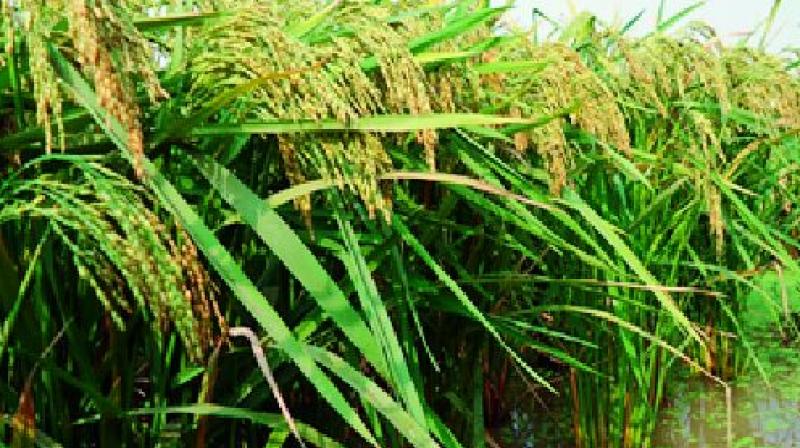Scientists develop improved variety of Mologolukulu rice
The reasons for the entire farming community opting for this variety in the past were its quality, taste and nutrition value.

Nellore: In an ambitious move to restore the past glory of the most sought after Nellore Mologolukulu rice variety, Acharya N.G. Ranga Agriculture Research Station in Nellore has been paying special attention to develop the variety further.
It is no hyperbole to state that Nellore became very popular for rice because of the Mologolukulu variety which was cultivated in a big way a few decades back. The reasons for the entire farming community opting for this variety in the past were its quality, taste and nutrition value.
However, the long duration of the crop, requirement of huge quantity of water, and people’s preference for slender varieties of rice pushed Molagolukulu to the backyard over the years. Most of the farming community across the district also opted out of this variety as it became prone to blast disease (aggi tegulu).
In this backdrop, Nellore Agriculture Research Station started developing the variety with focus on eliminating its weak points. They came out with a Molagolukulu variety known as NLR 3186 last year. The scientists are buoyed over the field trials carried out all over the state during the last Kharif season.
The duration of the 3186 crop was brought down to 150 days as against 170 days in the past. Scientists also rectified its lodging nature and made it blast tolerant without tip sterility, unlike previous varieties of Molagolukulu.
"The cooking quality of the medium slender grain culture is as good as its predecessors,” said D. Kodandarami Reddy, principal scientist of the Agriculture Research Station. "It is suitable for the Kharif season and farmers got good yields when they raised the variety last year," said Ms. Sri Lakshmi, ARS scientist. She said farmers were also coming forward to raise another rice culture known as NLR 3217 developed in their research station. It is a short duration rice culture with medium slender grain having resistance to blast, tolerance to sheath blight, sheath rot, brown spot and Tungro disease.
Superior varieties fall prey to malpractices by millers
Popular rice varieties developed at the agriculture research station are hit by the malpractices of the rice millers.
Instead of marketing the variety with its number or name christened by the Agriculture Research Station at Nellore, the millers and traders have been mixing them in costly varieties after buying them for a meagre price to make a fast buck.
For instance, an excellent variety developed and released under the name NLR 34449 (Nellore Mashuri) is high yielding, fine grain, blast resistant and responsive to high applied nitrogen and the yields are to the extent of 8 to 10 tonnes/hectare.
The area under this variety is increasing year after year and it is estimated that this variety occupies about 6 lakh hectares in the state.
However, the variety is largely used by traders and millers for mixing with another most sought after rice type, BPT 5204. One of the reasons for this is similarities between the appearance of the grain as well as cost difference.
While the cost of BPT 5204 is around Rs 19,000 for putti (850 kg), the cost of NLR 34449 is around Rs 15,000, which means Rs 4000 is pocketed for every putti without any hassles.
The traders use a steaming process at parboiled rice mills to prevent consumers from identifying the mixing. The technique also helps them to market the recently harvested grains as one or two year old rice.
When contacted, president of Nellore Rice Millers and Traders Association, Nagireddy Subhramanyam Reddy, said some traders and few small time rice millers had been adopting such malpractices because of competition in the market and deceiving the consumers.
He added that those marketing branded rice would not follow such deceptive practices.
"Though everyone concerned is aware of the wrongdoings, no one takes any action because it is very difficult to prove the mixing carried out with the steaming technique" an official of Agriculture Research Station said.

